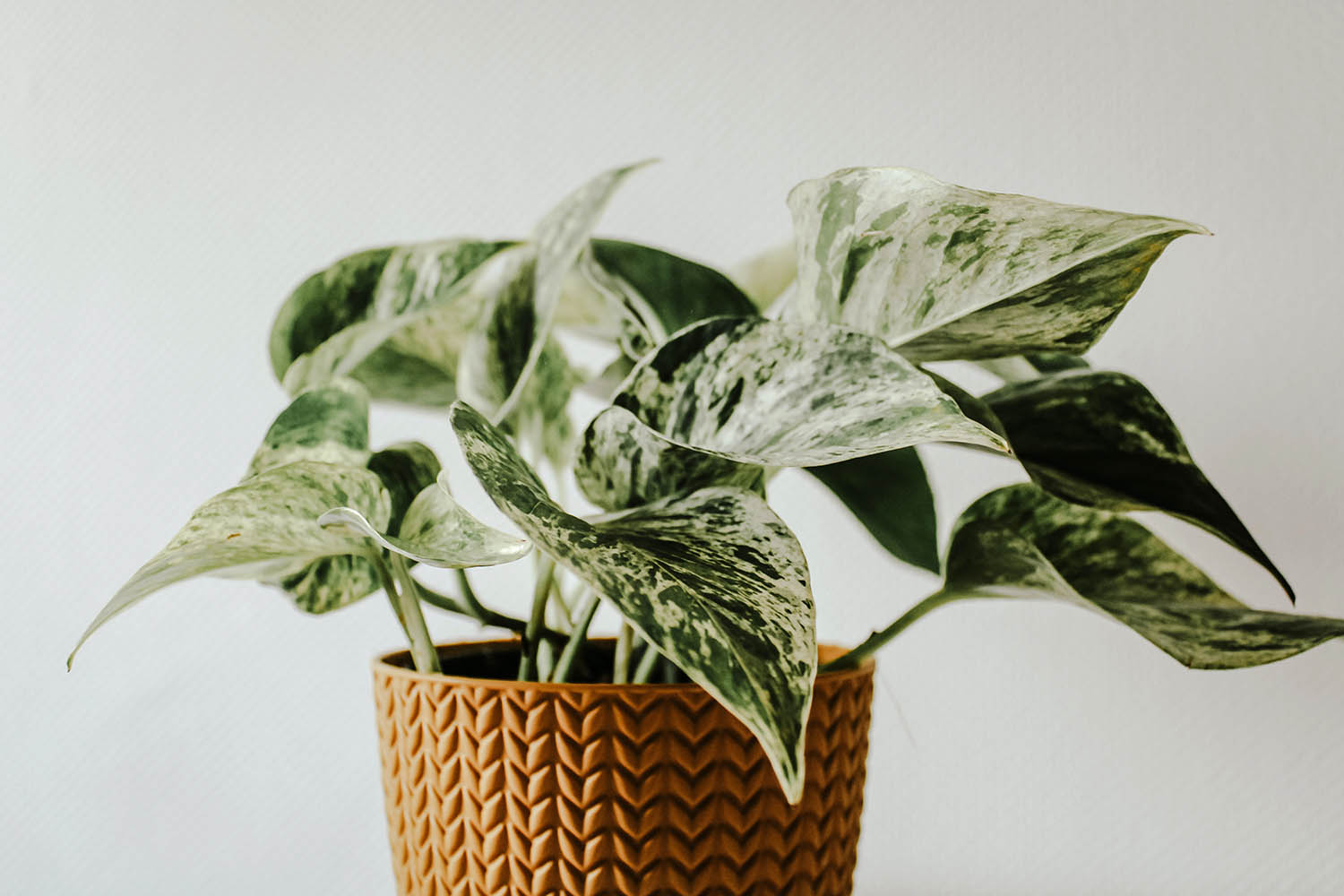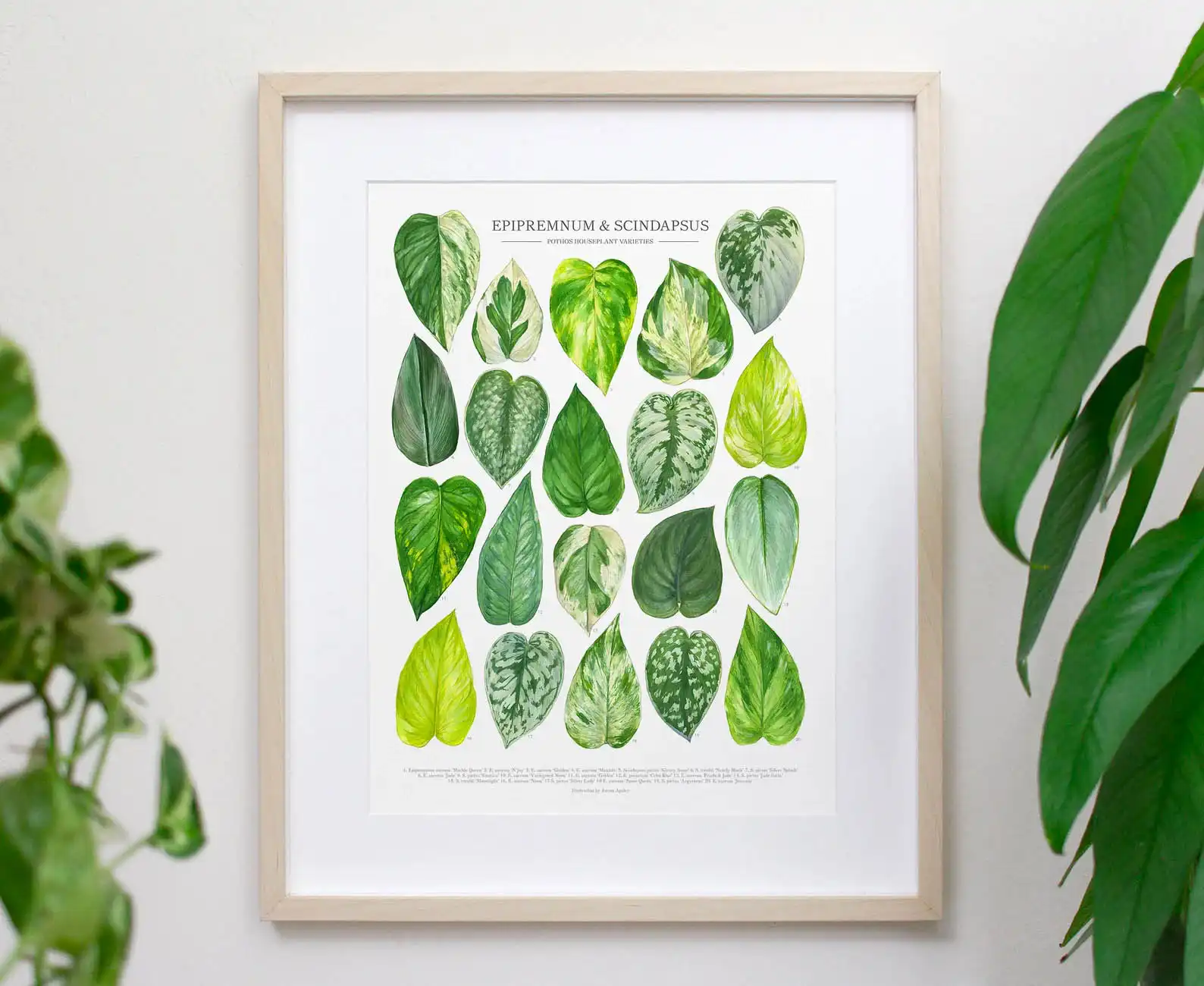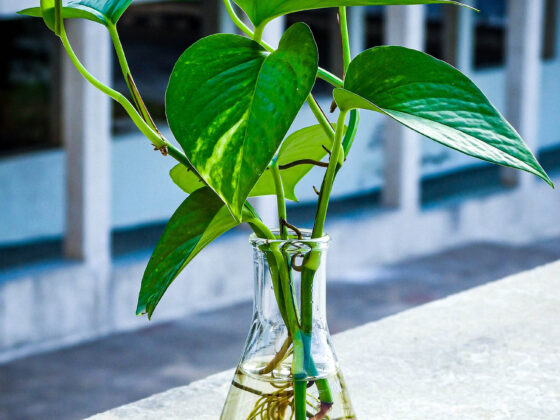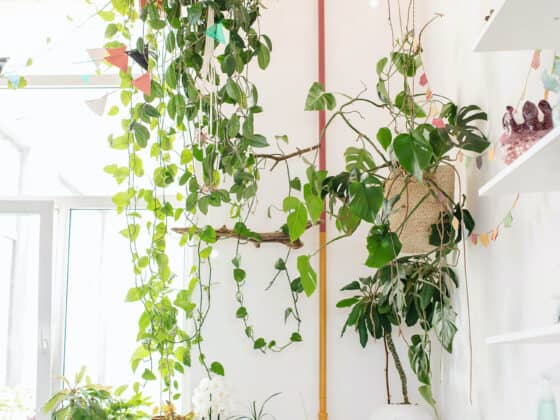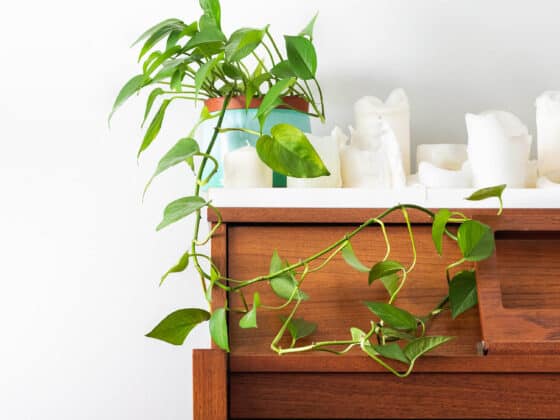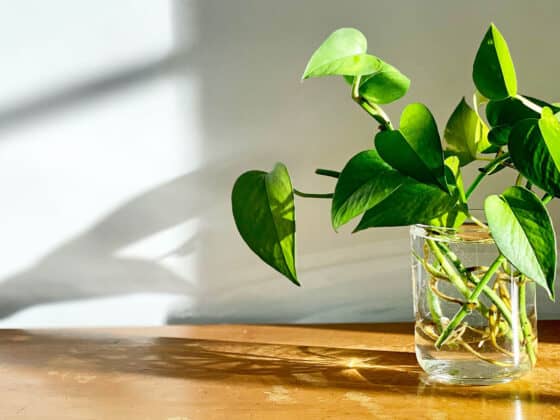Are you looking for some rare pothos varieties to expand your trove of plants? You’re not alone. The pothos, or Epipremnum, is one of the most widely owned types of houseplant. But over the years, lots of growers have created novel cultivars that put interesting twists on the basic Pothos look. This article will introduce you to some of these uncommon kinds of pothos.
Most rare pothos varieties feature distinctive variegation, like the bold white patches of the Manjula Pothos. Others, like the Cebu Blue Pothos, have more subtle differences in their coloration. And some, like the Teruno Shangri-La, feature leaf shapes that are unusual for a Pothos.
Remember that the rarity of a given plant can vary from time to time and place to place. For example, some varieties that are highly prized in America are much easier to get in Japan. And some formerly rare Pothos varieties have flooded the market in response to demand from collectors. In this article, we’ll focus on Pothos cultivars that aren’t widely available from US retailers.
How Rare Pothos Varieties Become Common
The very rarest Pothos plants don’t have names you can Google. They’re one-off mutations created by hobbyists and shared with a couple of friends. Or maybe they’re experimental varieties growing in academic labs or commercial nurseries. Once a new type of Pothos gains a following in the worldwide plant community, it quickly becomes a lot less rare.
That’s partly because there are so many people growing houseplants these days. It’s also partly because Pothos are so easy to care for and propagate. You can quickly produce a sprawling, mature plant from a small cutting of a Pothos stem. And growers love to clone and swap new, exciting varieties.
Throw in the internet and the global shipping industry, and it’s easy to see why cool Pothos varieties tend to spread fast. The days when plant enthusiasts had to travel to remote countries to track down exotic varieties are gone.
How to Find Rare Pothos Varieties
However, just because you can quickly find a particular Pothos variety on Instagram doesn’t mean you can get it at your local Home Depot. Many large houseplant retailers stick with a few well-known varieties that they know will sell well.
So certain kinds of Pothos are only available from specialty nurseries or independent growers who produce them in small batches. You may have to spend some time scouring the web to find people with cuttings for sale. Or you might need to wait for a reliable seller to produce a new crop.
Etsy is one of the best places to look for rare Pothos varieties. It’s filled with houseplant enthusiasts offering cool-looking plants, often for pretty affordable prices. It may be harder to find full-grown versions of uncommon Pothos cultivars on Etsy. But then, isn’t raising a thriving plant from humble beginnings part of the fun?
You can also get active in groups of houseplant lovers on sites like Reddit, Facebook, and Instagram. If you make friends who have big collections, they may be willing to sell or trade you rare Pothos cuttings. Just remember to use the usual precautions when dealing with strangers online. Look for people with good reputations in their online communities.
One important caution: avoid anyone trying to sell you “Pothos seeds”. This is always a scam. Indoor Pothos plants reproduce by spreading and splitting. They almost never produce flowers or seeds in captivity. To put it in perspective, the last recorded instance of an indoor Pothos blooming without artificial hormones was in 1964.
6 Intriguing and Rare Pothos Varieties
Here are a few beautiful Pothos cultivars that can be trickier to find. You may have to put in some legwork to locate these plants, but we think they’re worth the effort.
Manjula Pothos
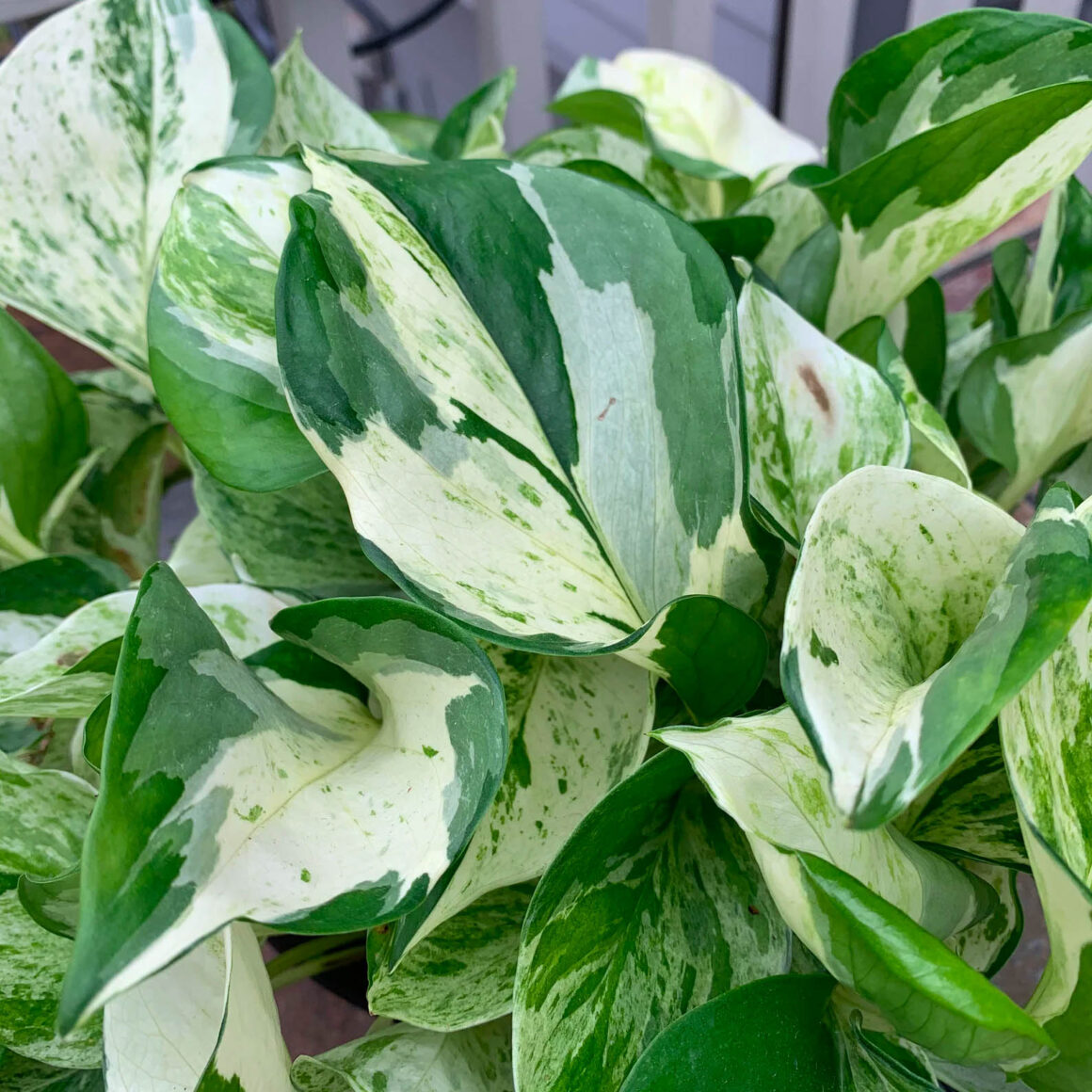
We’ll start with a type of Pothos that’s uncommon but not super-rare. The Manjula Pothos has an interesting backstory. Researchers at the University of Florida created it by mutating ordinary Pothos using gamma radiation. Yes, Marvel fans, just like the Incredible Hulk.
Instead of rage-fueled super-strength, this mutation created gorgeous variegation that includes random dashes of dark green, greenish-yellow, and bright white. The leaves are wide and heart-shaped, with round bases and slightly wavy edges.
Note: there are lots of rumors online about a hyper-rare variety called the Harlequin Pothos. This plant looks just like a Manjula, except that it sports larger patches of solid white. Some growers insist this is a unique mutation. Others are certain that it’s just a marketing gimmick used to upcharge for Manjulas.
Our advice? If you want a Harlequin Pothos, try starting with a Manjula and giving it a lot of bright, indirect sunlight. Or raise it under a grow lamp. Variegated plants almost always develop brighter colors when they’re well-fed. If this doesn’t produce the bold white splashes you’re after, you can go back to searching for the Harlequin.
Global Green Pothos
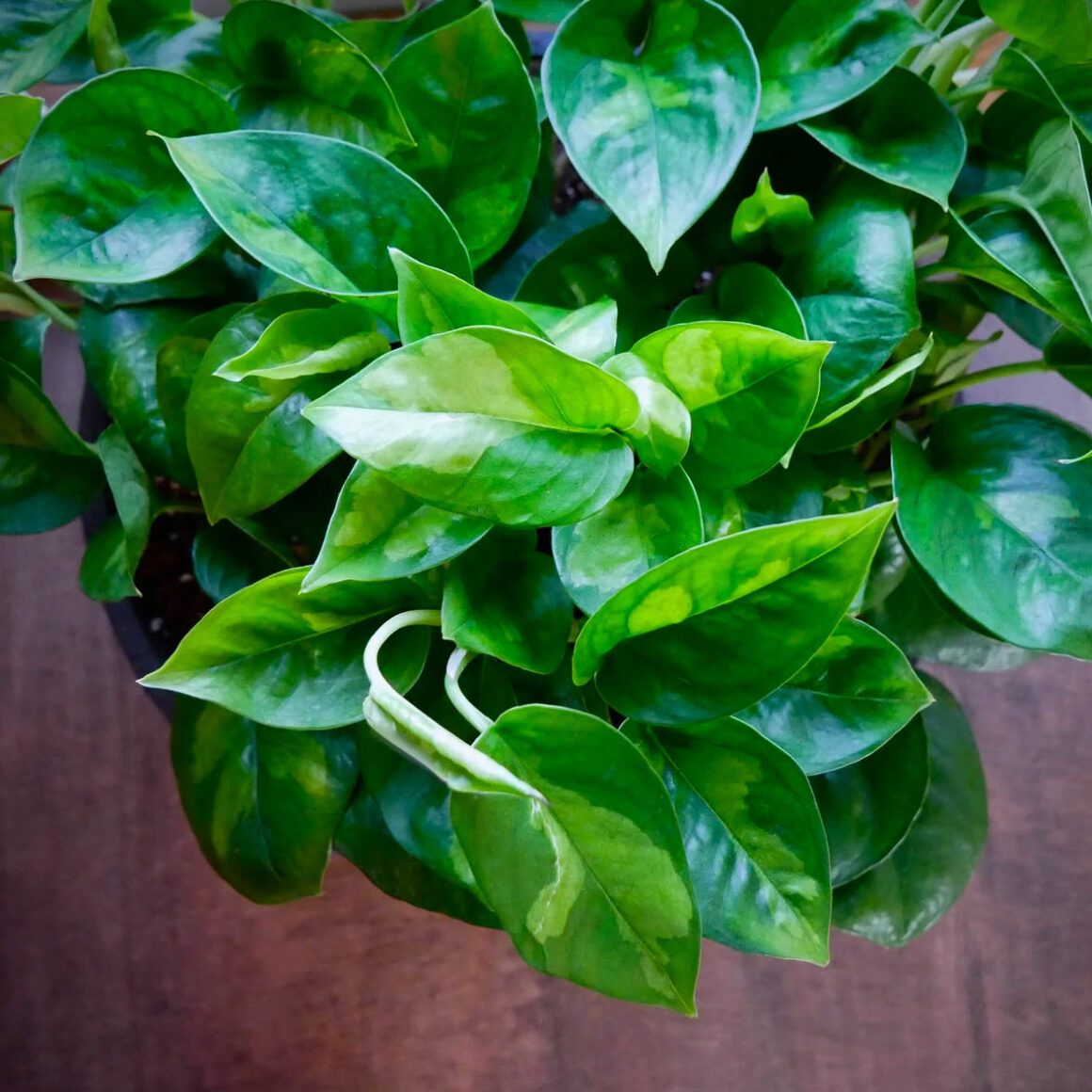
A plant nursery called Costa Farms brought the Global Green Pothos to America in 2021. The original creators? An unnamed specialty grower in Japan. This variety remains pretty rare and sports a distinctive appearance.
The leaves of the Global Green are fairly round, though as with most Pothos, they have a slight heart shape. Their coloration is a mix of light and dark green. These different shades show up in wide, mottled patches, giving the plant a slightly sun-kissed look.
Jessenia Pothos
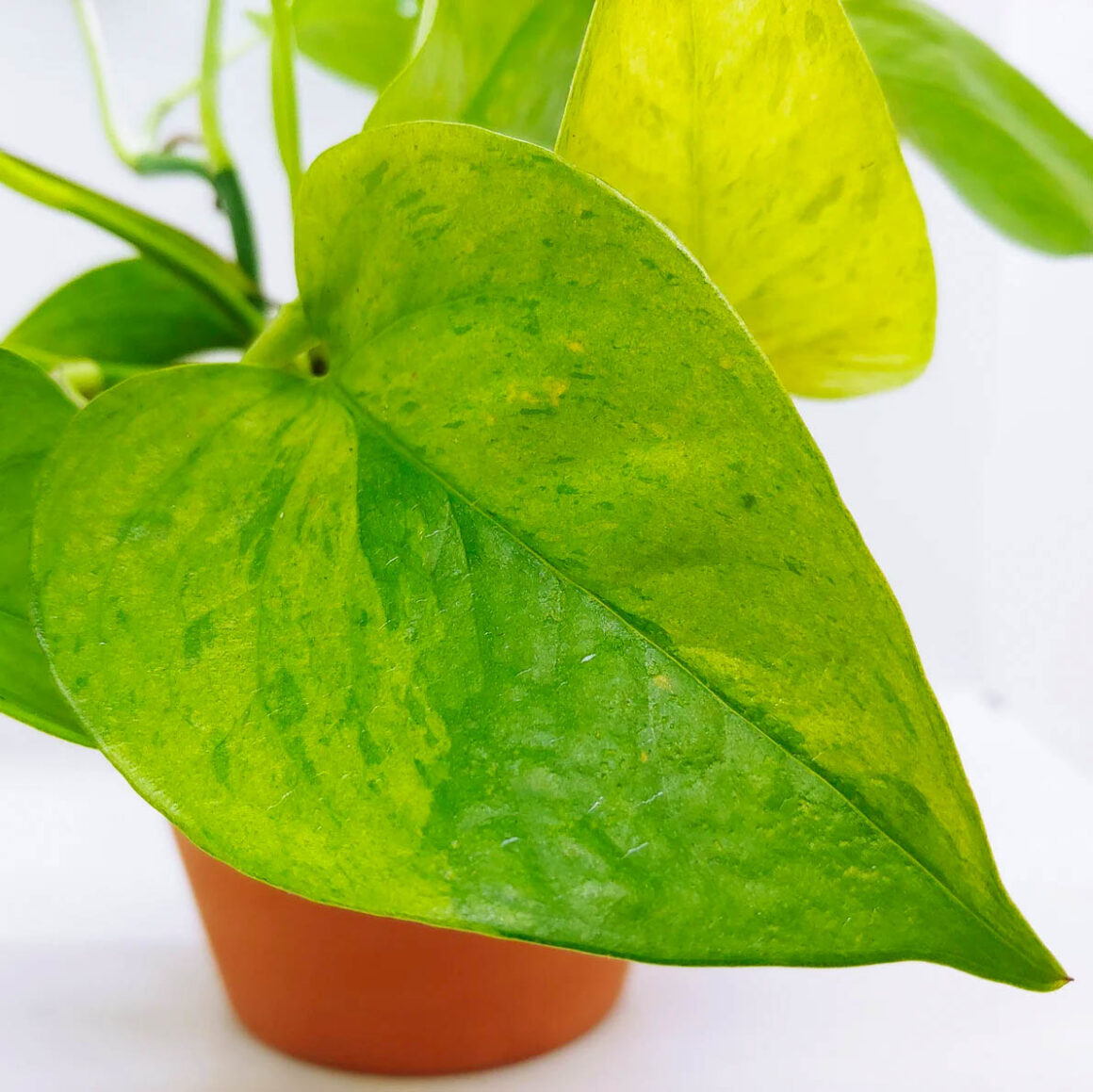
This rare Pothos variety has the same colors as the Global Green: dark forest green plus a lighter lemon-lime shade. But instead of solid, camo-style patches, these competing hues appear in sprays and speckles of color. The leaves also appear a bit more slender than the round hearts of a Global Green.
Some Jessenias have a fully marbled appearance, while others have only an occasional splash of one shade. Like most variegated plants, the mix of colors will change depending on how much sunlight it receives. Almost all Jessenia Pothos plants grow quite slowly.
Cebu Blue Pothos
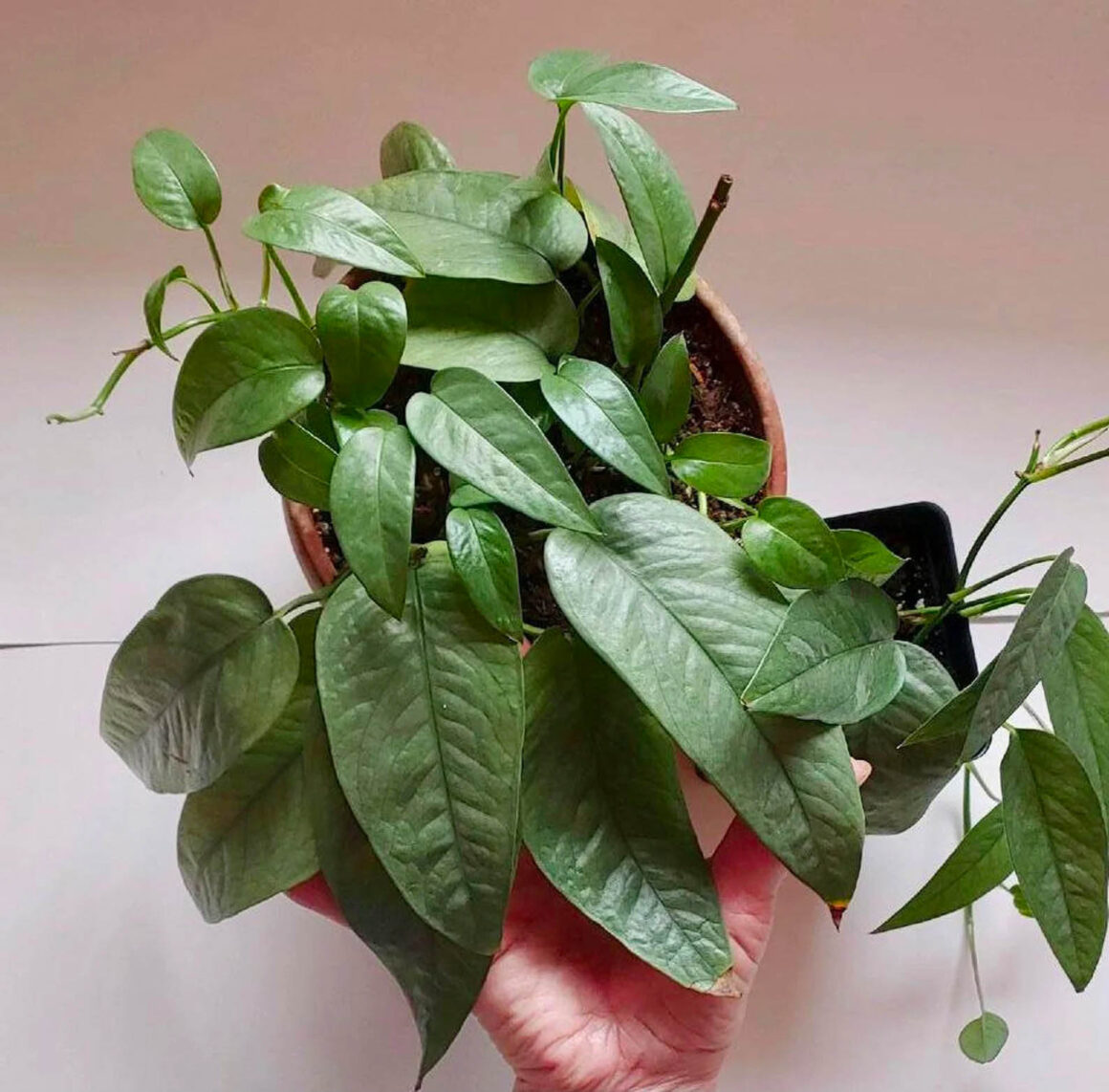
There’s a case to be made that this isn’t a “true” Pothos. Most Pothos plants are members of the Epipremnum aureum species. Cebu Blue is a variant of the closely related Epipremnum pinnata plant. However, the differences are very subtle, and almost all houseplant growers treat pinnata as simply another kind of Pothos. Even scientists initially classified them as the same species.
The Cebu Blue Pothos has longer, more lance-shaped leaves than its more well-known cousin. It also has an interesting tint that makes it look bluish-green in certain lights and misty gray in others. The effect is enhanced by the glossy sheen on the Cebu Blue’s leaves.
White Sport Pothos
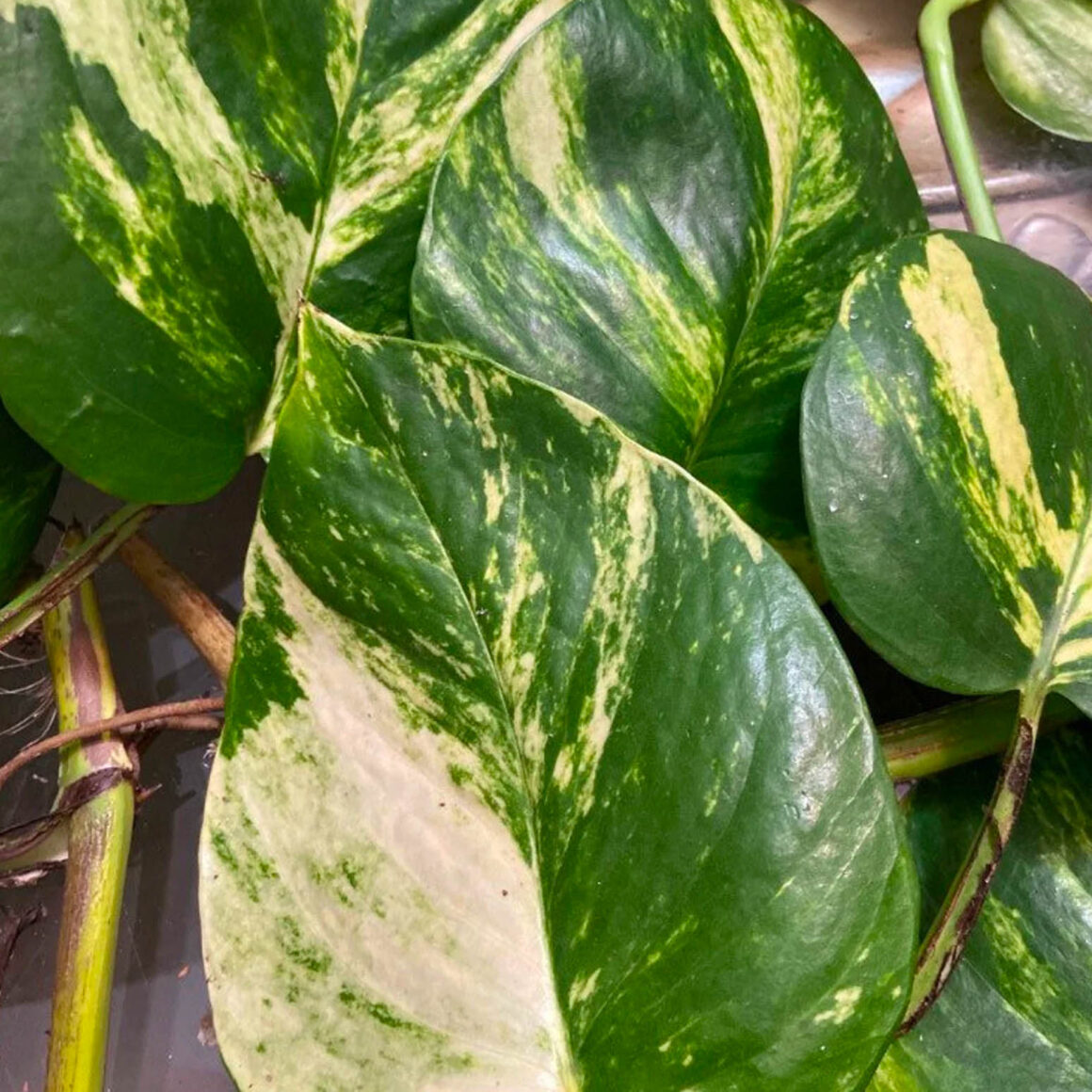
Technically, this isn’t a distinct cultivar. “White Sport” is a catchall term for a Pothos with a partial mutation that creates white variegation on its leaves. “White Sport Golden Pothos” is the most common type. However, a sport can come from any variety that doesn’t normally have white on its leaves.
We’re including this category here because you can reproduce these Pothos plants like any other variety. (As long as you know what you’re doing.) Make sure that you get a cutting including at least one leaf with white flecks. You should be able to grow it into a full-sized White Sport plant.
Teruno Shangri-La Pothos
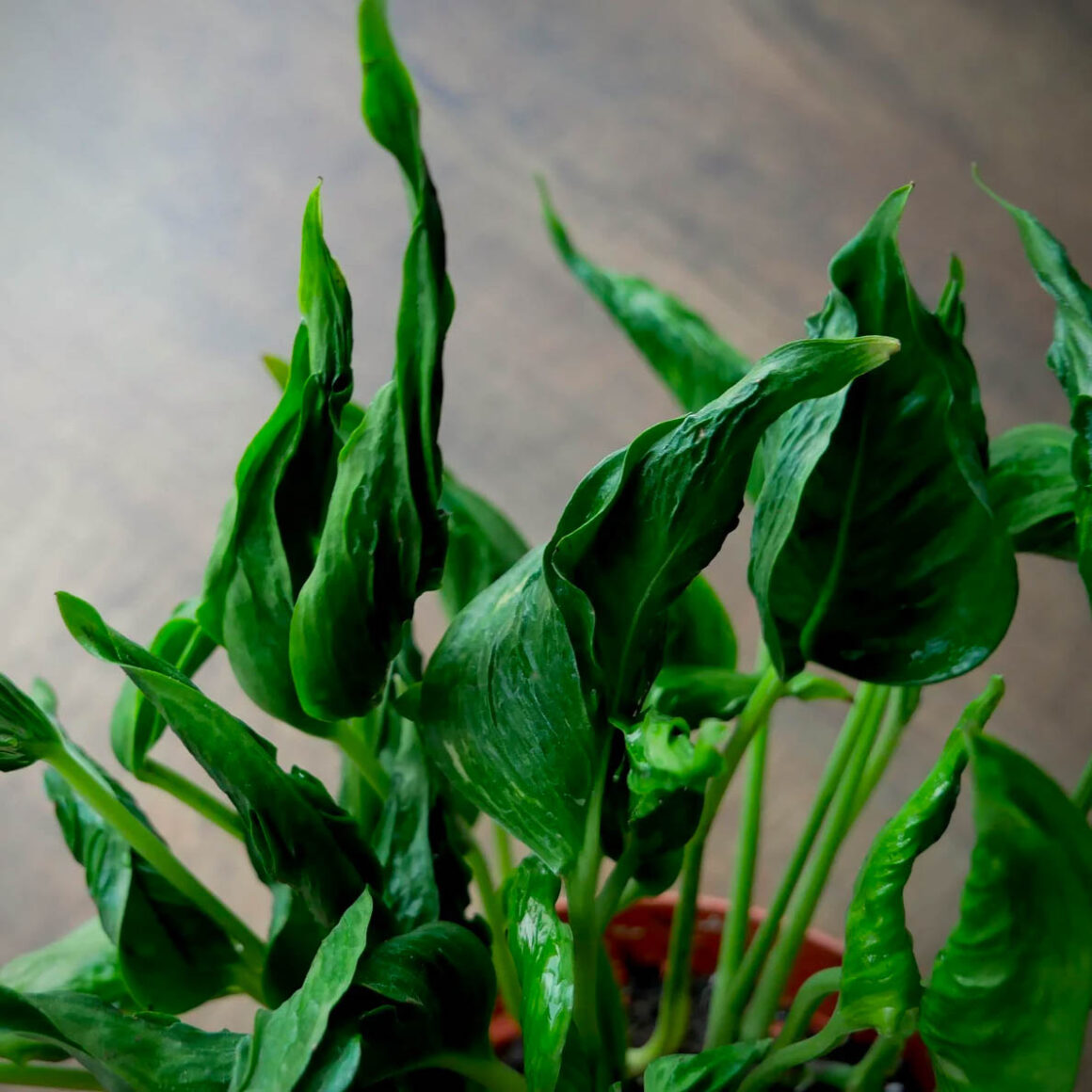
The Shangri-La is just one of the many eye-catching Pothos variants from the highly-regarded Japanese plant nursery Terunoworld. They’ve rolled out more than a dozen new kinds of Pothos in the last few years. Houseplant growers around the world have eagerly snatched these new creations up. They’re still fairly rare in the USA, though.
The Shangri-La Pothos is one of the most fascinating Terunoworld cultivars. Its deep green leaves grow in an upward-pointing, corkscrewing shape.
Not everyone is a fan. Some growers think the crumpled appearance makes the Shangri-La’s leaves look sickly. Others think the slightly sinister shape is cool, comparing it to witches’ hats or the spikes on a monster’s back. That last comparison has earned it another nickname: the “Godzilla Pothos”.
Even if you don’t like the Shangri-La, you should check out the other rare Pothos varieties from Terunoworld. Their catalog includes lots of eye-catching plants, and having one in your collection will definitely earn you some bragging rights.
Final Thoughts
The list above is by no means an exhaustive guide to all rare Pothos varieties. Finding the most elusive ones often requires immersing yourself in the world of plant collectors. There’s no substitute for a community of enthusiasts when it comes to learning about rare, unusual finds. Still, we hope we’ve given you a good starting point in your search for exotic Pothos plants. Happy hunting!






